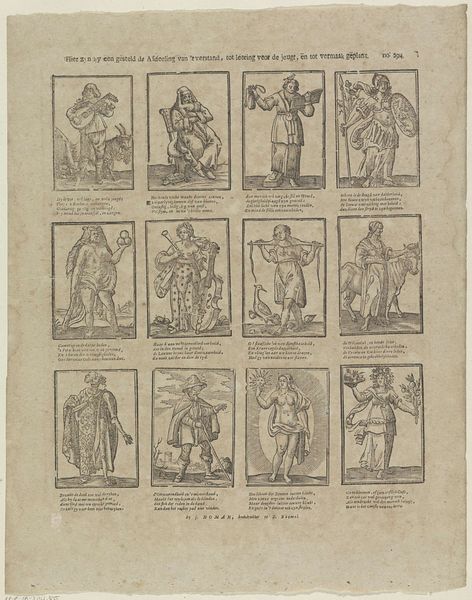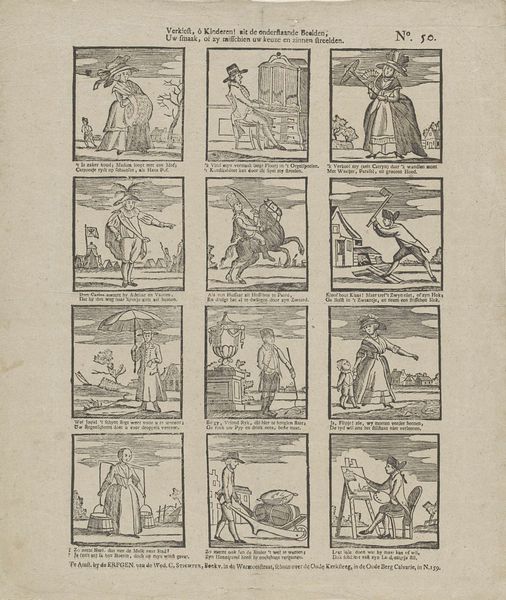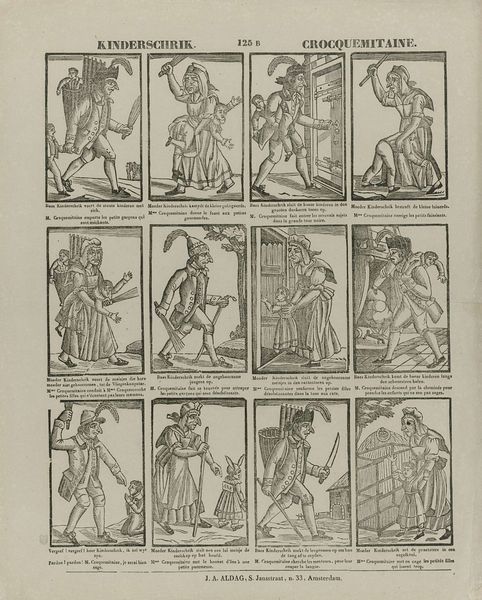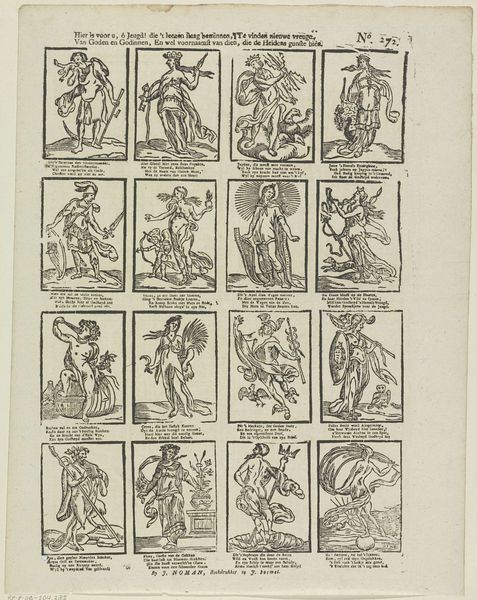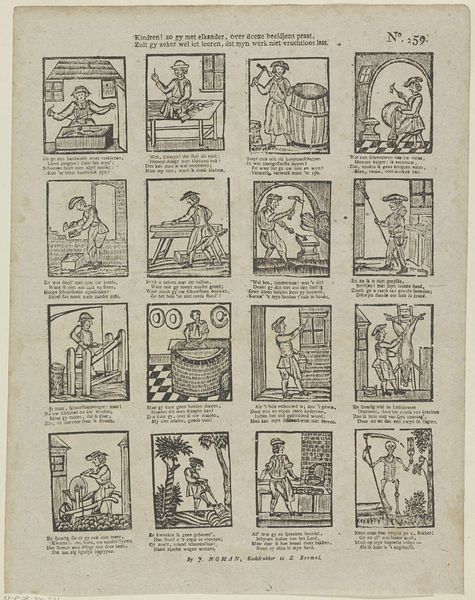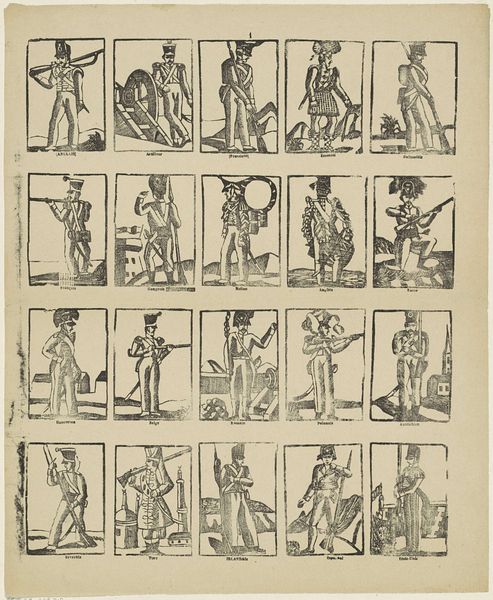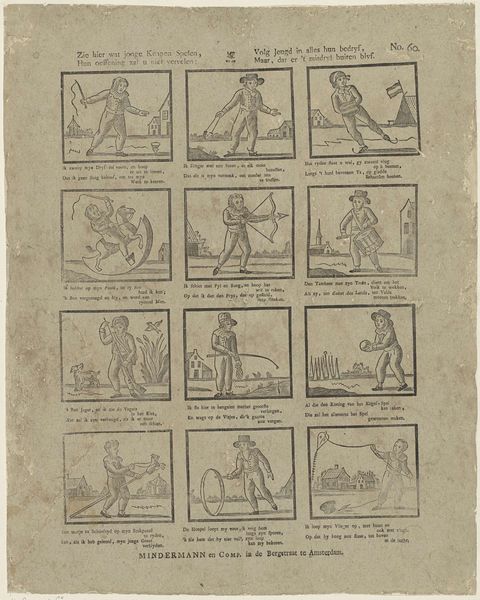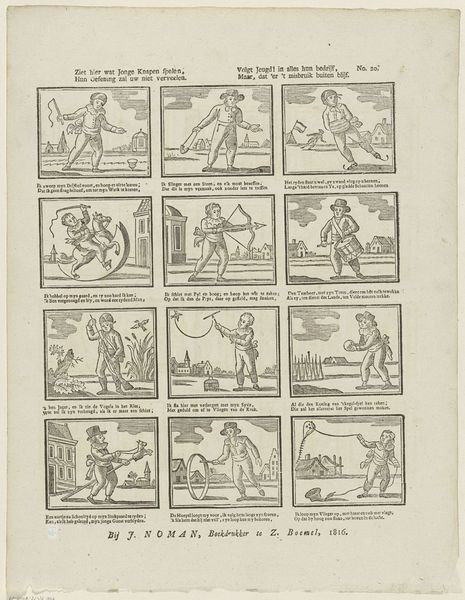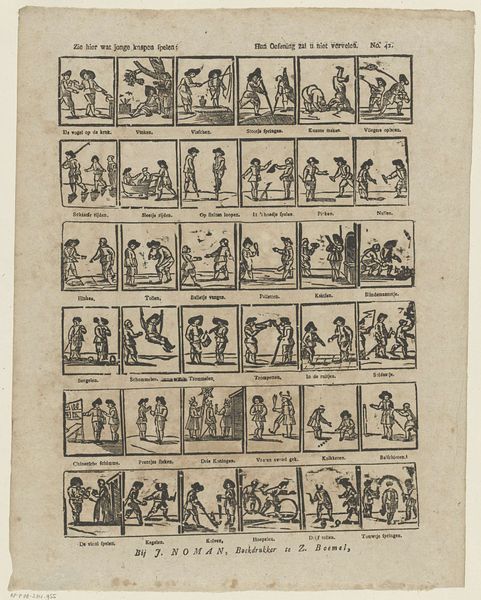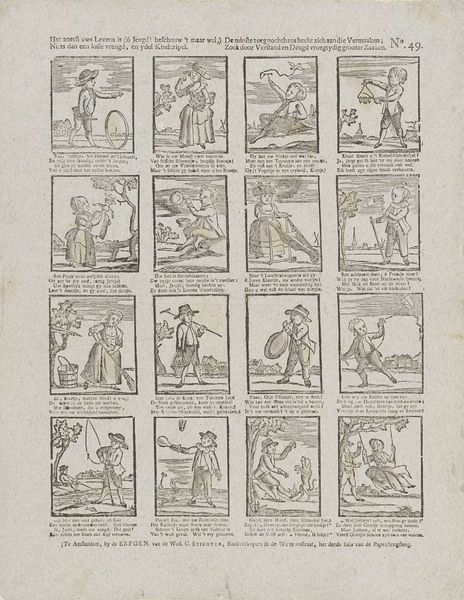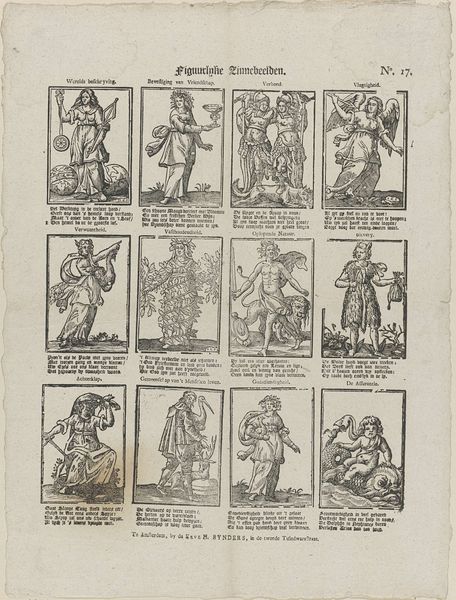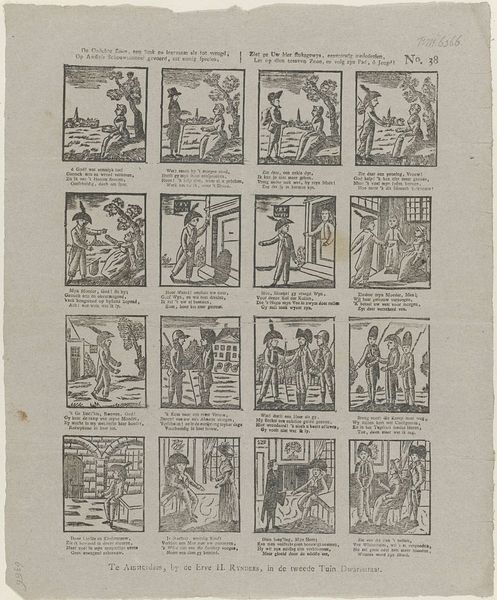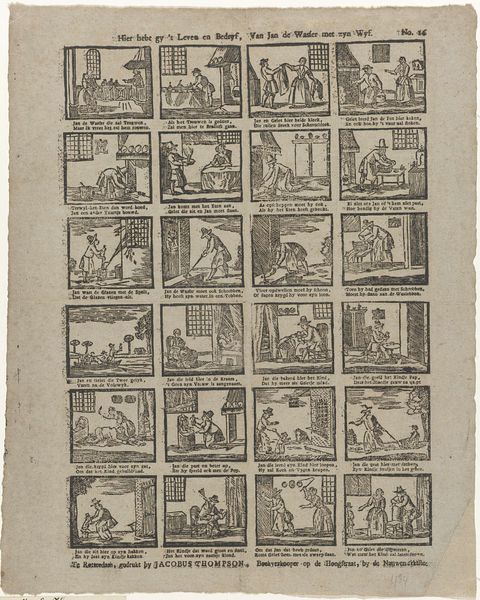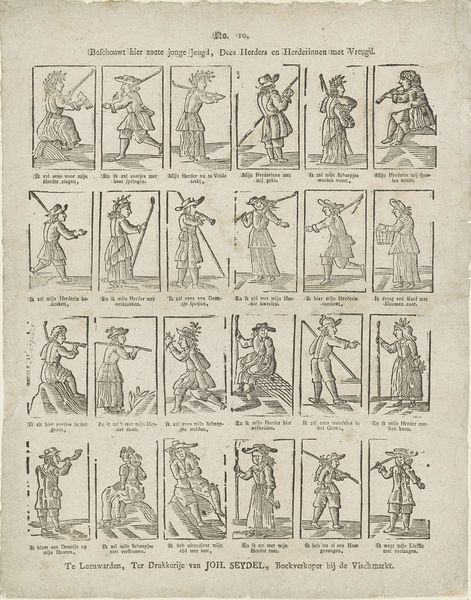
print, engraving
#
dutch-golden-age
# print
#
landscape
#
figuration
#
line
#
genre-painting
#
engraving
Dimensions: height 390 mm, width 315 mm
Copyright: Rijks Museum: Open Domain
This print, titled "The Twelve Months of the Year", was made in 1816 by Johan Noman, a book printer in Zaltbommel. It’s made using a technique called wood engraving – a relief process where the artist carves an image into the end grain of a block of wood. Look closely, and you’ll see how the crisp lines and graphic quality result from this method. Noman likely used specialized tools, like gravers, to achieve this level of detail. The technique lends itself to the production of multiple impressions, making images widely available. Prints like these were often included in almanacs, calendars, or books of hours, connecting the rhythms of agricultural life to the passage of time. Each month depicts activities associated with a specific time of year, reflecting the labor involved in farming and seasonal changes. By exploring the materials and processes used in its creation, we can better understand the cultural and social significance of this print. It offers insights into how art, craft, and industry intersected in the 19th century.
Comments
No comments
Be the first to comment and join the conversation on the ultimate creative platform.
